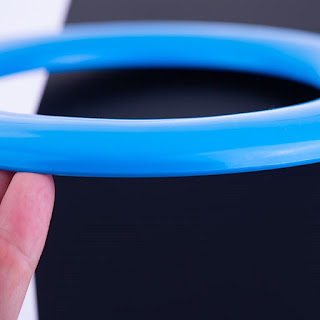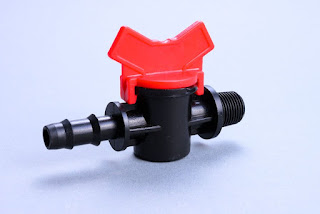What Does Injection Molding's Parting Line Mean?
All injection frisbee components have a separation line that may be seen. When a mold's two parts are clamped together, a line separates them. Although molds must totally seal during the process, a faint visible line is always present on the finished product. The size and appearance of the line are determined by the plastic type and mold design.

Parting Lines
The term "parting line" describes a line on an Injection Molding component that is produced where the two halves of the mold converge. The end result is a thin, occasionally imperceptible line on the portion. This line often has little impact on the part's overall dimensions or shape, but it can be visually evident to varied degrees, depending on the mold finish, the type of material, the color of the material, and the processing conditions. There are a few strategies to reduce the visibility of this line on the molded item, but since injection molding uses a mold that has two sides, it is impossible to totally prevent it. The shape of the part will often determine the parting line. The separation line should be placed in such a way by the mold designer that it produces the most strong tooling design while also being least obvious. However, the part's design frequently places limitations on the user.
The parting line should typically follow the part's outside contour and allow all of its features to pass through the tooling in the direction that the mold opens. The locations and directions of the draught required to release injection molded pieces from the mold will affect where the separating line is located. Due to these factors, much thought must go into the part's design in order to situate the parting line where it will have the greatest impact on the part's intended use.
The location of the parting line will impact the mold's cost as well.
A dividing line that lies on a single, flat plane is the simplest and strongest kind. However, this kind of separation line is not always feasible due to the complexity of many injection molded parts. Since the parting line typically needs to match this contour, parts with intricate contours frequently have higher mold costs. By addressing these problems during the component design phase, the part designer can frequently lower the cost of the mold. A well-designed part from the perspective of injection molding has a well-defined parting line that has been created to be as straightforward as feasible.
How Should a Plastic Parting Line Be Set?
Mold function and part function both affect where a plastic parting line is located. The mold opens at the separating line, therefore easy ejection from that location is necessary. It might also be apparent and have an impact on how well the finished component works.
At Moulding Injection, we'll do our best to select the parting line that will allow for simple mold operation and a finished product that meets your standards. The separation line in the figure to the left follows the edge of the plastic injection mold design and moulded component. The mold's seam was located here. The placement and configuration of the separating line around the edge of the part, as shown, is frequently optimal.
Contact Plastic Injection Moulding France for all your moulding injection requirements.
Why Does Injection Molding Use a Parting Line?
Because of how plastic part molds work, an injection molding parting line is needed. To allow plastic to be injected into the middle, the mold's two parts can be brought together. Even though the mold seals very firmly, as it opens to reveal the part, the area around the seam will have a very slight parting line. The separation line is something that needs to be taken into account and planned for with every mold, even if it could be extremely minute depending on how tightly the mold fits the material.
What difficulties may a parting line present?
Plastic separation lines present certain difficulties in the injection molding process, as with anything else. Here are just a few issues with parting lines that injection molding experts frequently run with. In addition to silicone replacements, a set of earbud headphones.
Preventing Parting Lines on Parts Made of Liquid Silicone
Working with liquid silicone rubber (LSR) parts is more difficult. Molten LSR can produce more flash, or thin extra plastic, along the parting line because it can fit into narrow spaces. Although it is more challenging to get it right, well-designed LSR parts will have a parting line that is narrower and less obvious. These earbud covers are constructed of LSR (right).

Comments
Post a Comment